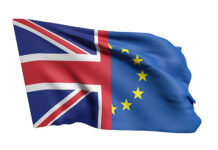CHF immune to lacklustre trade data
Swiss trade data came on the soft side in April, highlighting the negative effects of a high level of political uncertainty that stemmed from the French elections and Brexit talks. Exports contracted 2.5% m/m in April compared to a downwardly revised reading of 1.8% in the previous month. On the contrary, imports rose 2.6% from 0.6% a month earlier. Accordingly, the trade balance printed at CHF 1.97 billion, the lowest level since December 2014 when it came in at CHF 1.51 billion.
After a short but encouraging recovery in March, the Swiss Watch industry experienced rough market conditions in April. Exports contracted 5.7% y/y as the demand from Hong Kong and the USA, the two largest importers, contracted significantly: -16.8% and -19% respectively. On a more positive note, the exports to mainland China and the United Kingdom kept their positive momentum, thereby limiting the damage. The disappointing April trade figures are a good reminder that a unified and stable European Union is a necessary ingredient for a successful Swiss economy.
EUR/CHF was treading water at around 1.0935 this morning. From a technical standpoint, the 200dma currently lying at 1.0784 remains the strongest short-term support, while on the upside the 1.10 psychological threshold will act as resistance.
Canada: OPEC rumours send the loonie higher
Canada’s central bank will decide about its rate tomorrow and financial markets expect it to remain unchanged at 0.50%. The cost of borrowing should then stay low for some more time and underpin the housing bubble. Since 2009, the average price of a home has increased by more than 40% in nominal terms. In terms of economic data, annualised inflation (1.6%) is declining and is still below the central bank’s target midpoint. Retail sales (excluding Auto) is also on the soft side with -0.2% y/y performance.
We believe that the major CAD drivers are US President Donald Trump and OPEC. The market is pricing in more difficulties for Trump to achieve its reforms. There are now more downside pressures on the US dollar. The loonie has been strengthening since the start of this month and is now trading around one-month highs against the US dollar below 1.35. However, there are rumours that OPEC may continue to cut production beyond June, and for the next nine months, so this is also sending the loonie higher. There is definitely more downside risk on the USDCAD pair.
Carry looks solid
Volatility continued to decline as political concerns fade into the background. VIX is now at levels seen before the James Comey memo rocked equity markets. Despite the nervousness in markets we anticipate investors will become numb to the scandal plaguing President Trump’s administration as investigations tend to be protracted events.
In the absence of Trump-fuelled political risks, carry trade has again become attractive. USDJPY remain the barometer for investors should President Trump’s problems escalate. USDJPY’s move off 110.24 indicates easing of political uncertainties. Sentiment around the greenback has weakened and it will take a significant upside surprise in economic data to give yields the necessary push higher to boost USD.
Dovish commentary from the Feds Evans and Brainard (both voters) has lowered expectation for the FOMC minutes being released tomorrow. Both speakers highlighted the lack of strong price pressures and a historical pattern of inflation to undershoot the 2% target. Yet strong data leading up to the June rate decision could quickly shift USD bias.
Today’s US PMI and new homes sales could provide further clarity on US economic uncertainties. In addition, Fed Kashkari (voter) will speak. We see the current balanced environment positive for EM FX – specifically MXN, INR and IDR.











